Ripsalis: description, types and care
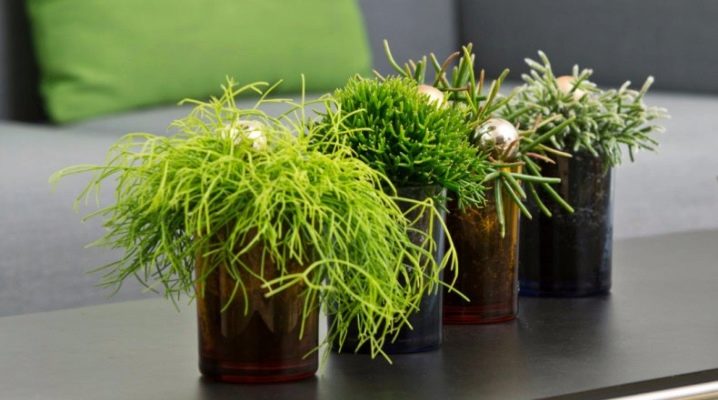
In nature, there are abundant crops that can also be grown at home. Among the variety available, it is worth highlighting succulents, whose decorative properties have made them very popular. Such plants include ripsalis, represented by several dozen species, which are actively used to decorate a room.
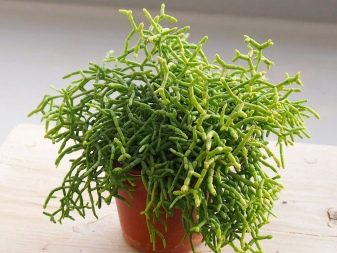
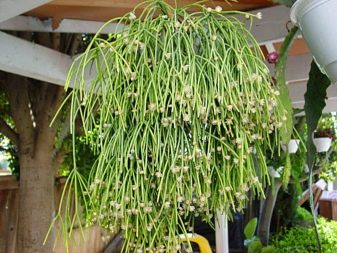
Peculiarities
This plant is a perennial succulent from the cactus family that stands out from other crops of its kind. unusual appearance. In its natural environment, Ripsalis grows in tropical forests, most often the plant can be found in Brazil. Succulent consists of a huge number of small shoots, which in the process of growth lengthen, forming a rounded cap around the base of the flower.
In addition to wild nature, Ripsalis, like hatiora, is actively cultivated at home, rather quickly builds up its green mass, in the light of which it becomes in demand as a decorative flower.
Adhering to the recommendations regarding care, in a fairly short time you can get a very beautiful lush plant, which will become a worthy decoration of your home or office.


The flower is an epiphytic culture, having a small superficial root system. Due to these features of its structure, in the wild, the cactus develops on trees, thanks to which the culture manages to avoid waterlogging and rotting of the roots during periods of heavy rainfall. The shoots themselves have component parts, represented by elongated lobes. As for their shape, depending on the species, there may be some differences in their structure.
You can meet cultures with cylindrical shoots, with a flattened base or with several ribs... The color of the stems is deep green.
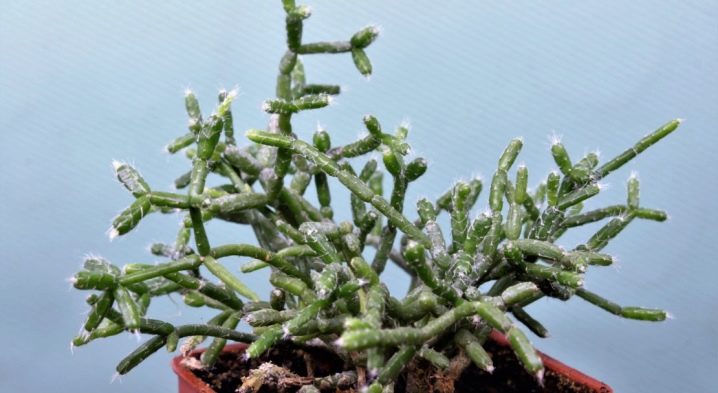
According to the description of some species of Ripsalis, the stems of a plant may have areoles, as well as light pile on the surface... The plant acquires splendor due to the fact that cactus shoots are combined into dense and large branches, the length of which can reach one meter, with an average stem width of only a few millimeters. A feature of the structure of Ripsalis is the formation of aerial roots where the stems will connect with each other.
The decorative attractiveness of a flower is due not only to its specific structure and stem development, but also to its ability to bloom. The culture throws out single buds, which in their shape resemble bells with narrow petals and stamens in the middle.
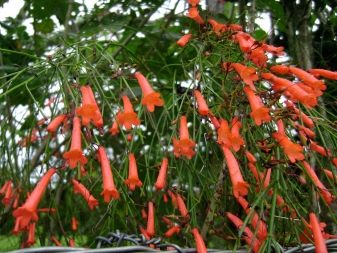
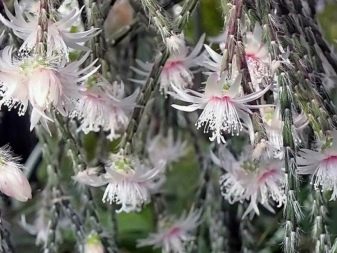
Home-grown plants bloom with yellow, white or pink flowers... As a rule, indoor Ripsalis enters the flowering phase in the autumn-winter period, when the hot season begins in its homeland.
On pollinated flowers, mini-fruits can subsequently ripen, which are represented by rounded berries with a sticky pile.
Types and varieties
According to the modern classification, today there are about six dozen plant varieties. Particularly popular with florists enjoy the following succulents.
- Barchela. An unusual flower is formed from thin cylindrical shoots, as a rule, their diameter does not exceed 2-3 millimeters with a length of about 5-6 centimeters. Whitish blotches are present on green stems.
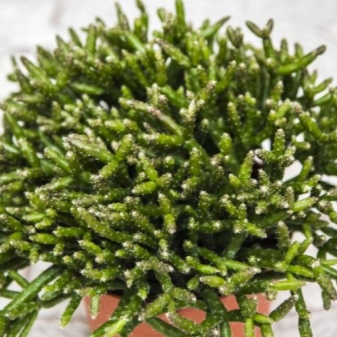

- Hairy. Ripsalis got a similar name due to its stems, consisting of miniature, but elongated lobes. The culture consists of a large number of shoots that bend, forming a shape around the pot that resembles a shock of hair. The cactus of this species blooms with white flowers, usually flowering occurs in the autumn months, and in winter the culture is in a dormant phase.
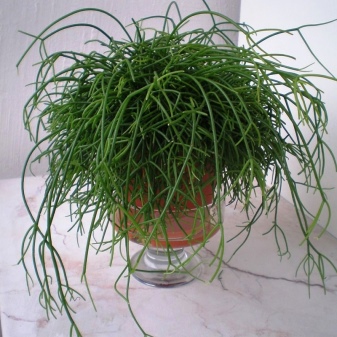
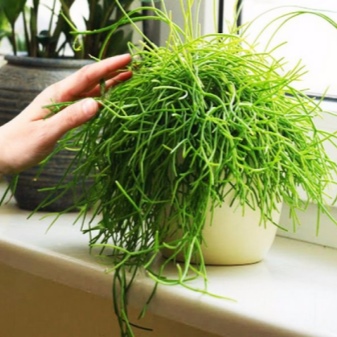
- Gnarled. In this flower, the stems will be cylindrical or bottle-shaped; in the process of growth in a young plant, the shoots are actively stretching upward. But over time, under their own mass, they will still descend and branch below. The flower lobes are small, their diameter will be several millimeters, while the maximum length will be at the level of 5-6 centimeters, with a total loop length of one meter.
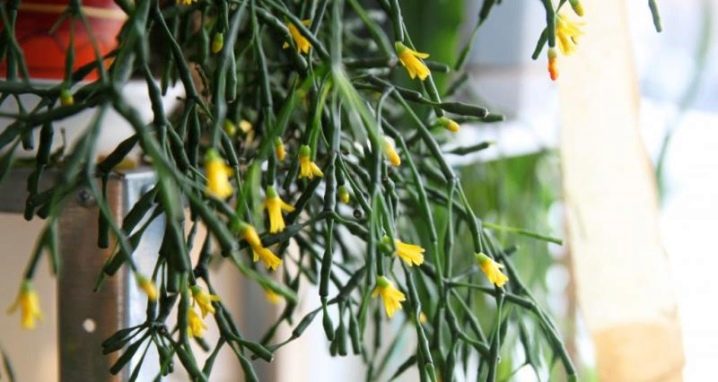
- Pilocarpa. This perennial develops with powerful shoots colored bright green with many areoles and small hairs on the surface. A succulent plant, with proper care, is capable of throwing flowers twice a year. They will have a yellow color and a large number of stamens inside.

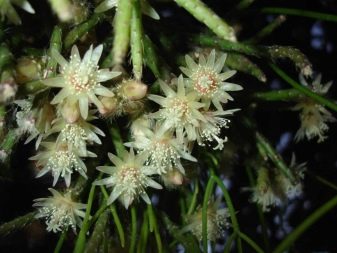
- Elliptical. The lobes in this variety will be wide and rather flattened, the stems on the surface contain areoles with villi. The buds are formed from the sides of the flower, their color is predominantly yellow.
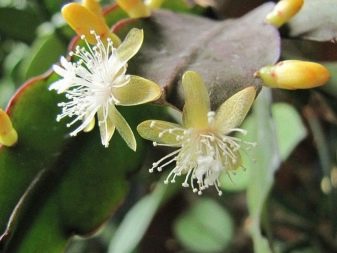
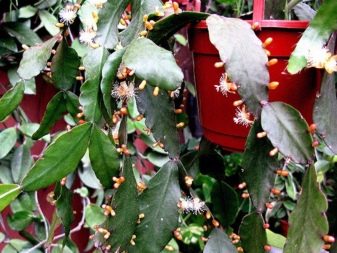
- Prismatic. Shoots of this species will consist of lobes, the length of which will be about 15 centimeters. At the top of the cactus, shoots with 3-5 edges grow, they provide the flower with a shape resembling a cylinder. The flowering culture occurs with white flowers.
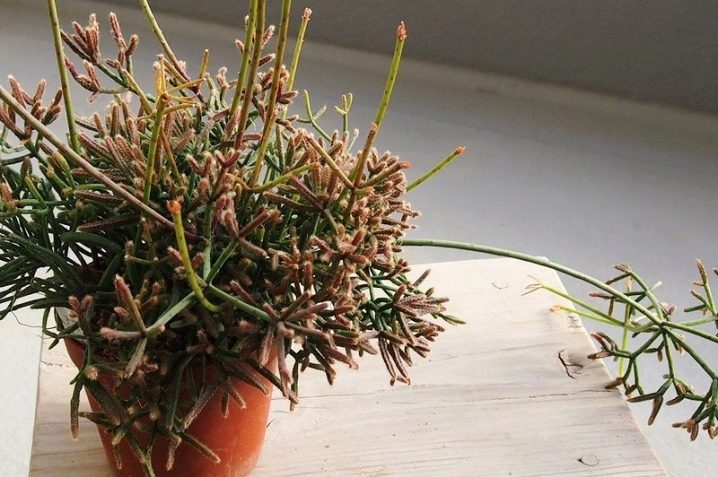
- Poisonous. A very large indoor culture, the length of its shoots can reach up to 4 meters. Some perennials contain thorns on their stems. Ripsalis blooms with white flowers, can bear fruit with berries of a similar color, the diameter of which will be 6-8 mm.
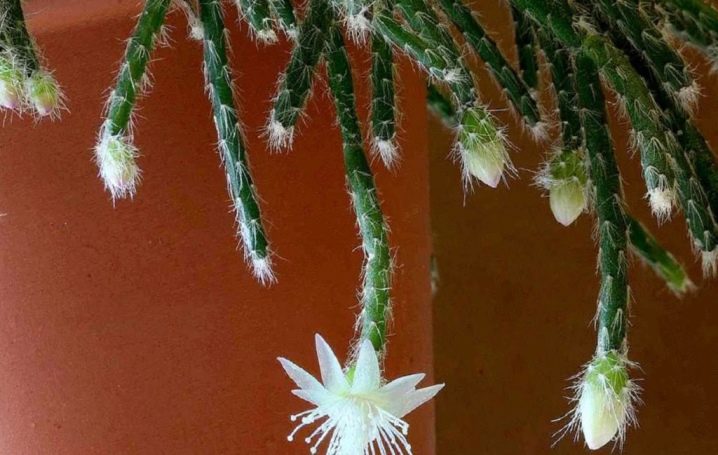
- Cereuscula. The most popular plant among florists. The plant forms a lot of shoots that frame the pot and fall in the form of arcs. The diameter of the flowers does not exceed 2 centimeters, the color is predominantly white.
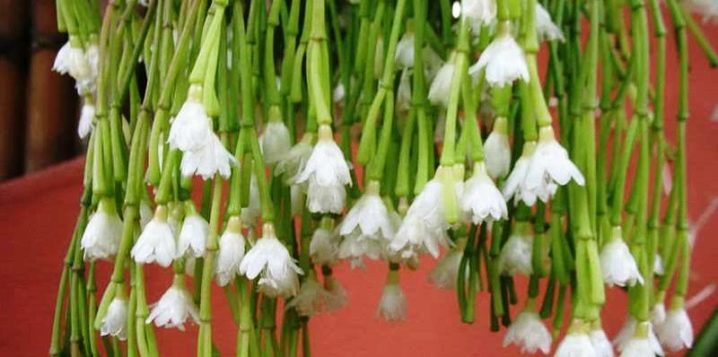
- Ripsalis Lindbergh. The culture blooms with small pink flowers, its stems do not exceed 5 millimeters in diameter with a length of about one meter.

- Curly. The shoots are distinguished by their medium size and flat shape. The rich green color of the plant is adorned with small creamy flowers that form in each segment of the crop.
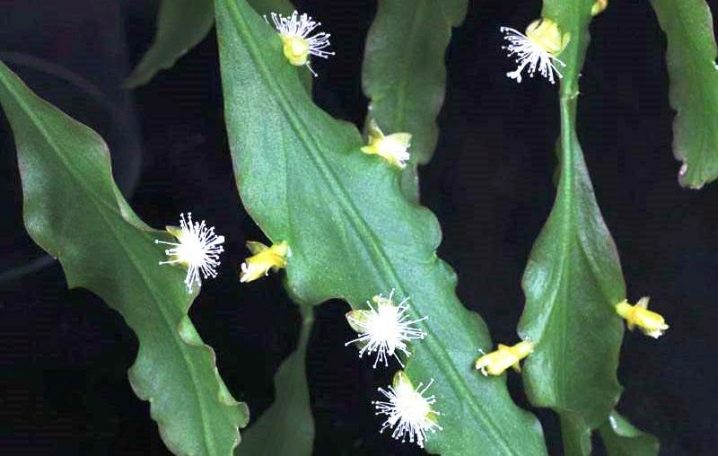
Also, the following varieties of ripsalis are actively grown at home:
- pachiptera;
- heteroclade;
- Ulle;
- clavata;
- mix;
- empty (cassette).
Conditions of detention
Rhipsalis is a plant that at home will not give the grower unnecessary trouble. However, the fundamental factor on which the health and flowering of a culture depends is the correct selection of a place to place a flower pot.

As for the level of lighting, the perennial will need a dim, diffused light; the cactus also develops well in partial shade. Direct sunlight will negatively affect the growth and appearance of the ripsalis, therefore, it is recommended to shade the windows facing the south side in the summer. In the warm season, the flower can be taken out to the balcony or loggia, as well as the veranda.
The most suitable room temperature for a cactus will be a thermometer, varying in the range of + 18-22 ° C. To avoid overheating in the summer months, the room where the flower grows, it is recommended to ventilate regularly. The culture is not afraid of drafts, the shoots retain their structure even with tangible gusts of wind. In winter, the temperature in the room for the ripsalis should be lowered to + 10-12 ° C.
The cactus, unlike many varieties of indoor flowers, does not require maintaining high humidity, so even during the heating season there will be no problems with it. Periodic bathing under a warm shower has a positive effect on the culture.
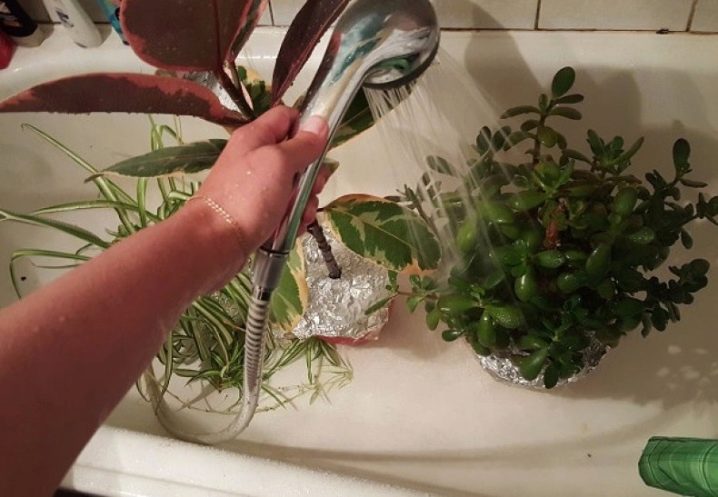
How to care?
Caring for a culture comes down to performing fairly simple activities.
Watering
A succulent plant needs regular and abundant moistening of the soil and root system, experts advise focusing on this issue on the level of soil drying in the pot: it should be one third dry. After flowering, when the plant is in a dormant phase, watering can be reduced. For moistening, it would be more correct to use water at room temperature, but only after it has settled well.
In the heat, you can additionally spray the shoots.
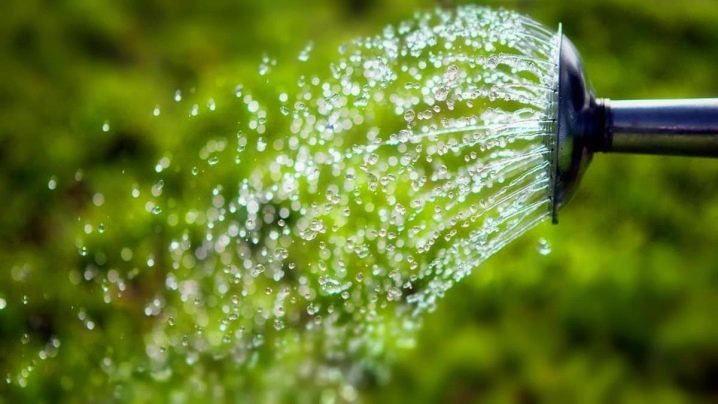
Top dressing
The culture will need additional nutrient complexes during the growing season. Therefore, growers are advised to fertilize Ripsalis every two weeks using specialized formulations for cacti. Use with extreme caution substances containing nitrogen salts.as they can provoke rhizome rot. In winter, there is no need to fertilize the cactus.
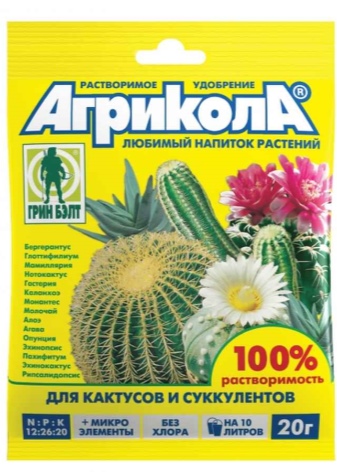
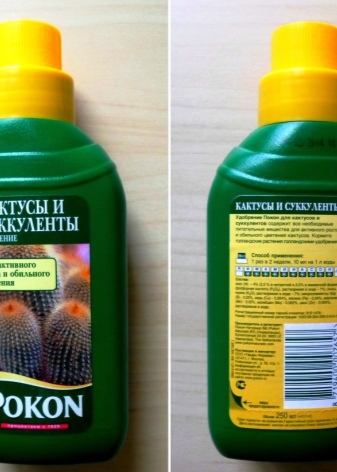
Transfer
It is necessary to transplant the culture only as a last resort, since in the process of these manipulations it is very easy to damage the roots and shoots of the plant. To root a flower, shallow pots or pots are usually used. It is worth changing the soil and capacity of the cactus no more than once every 2-3 years. While the cactus has not yet grown, the young plant is allowed to be replanted annually.
A suitable soil for Ripsalis will be a nutritious and slightly acidic soil. Florists very often use substrates with sand, peat and turf soil. At the bottom of the cactus pot should be be sure to drain. The transplanting process itself involves a transshipment method.
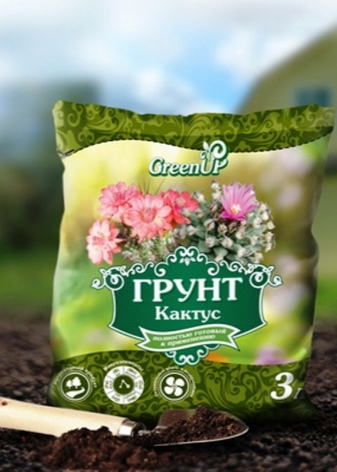

Reproduction
There are several ways to propagate a succulent plant - cuttings and seeds... The latter option requires deepening of the collected material into the ground immediately after collection, since perennial seeds quickly lose their ability to germinate. Also, before planting, they should be pre-soaked in a solution of potassium permanganate. A cactus is grown from seeds in a small container, deepening the material into a substrate of peat and vermiculite.
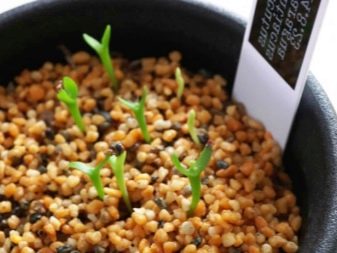

For the seeds to sprout, they need to create a mini-greenhouse, covering the container with a film, the temperature in the room should be maintained at + 23-25 ° C. As a rule, healthy planting material will sprout in a couple of weeks. You need to plant several young crops in separate pots.
Cutting method assumes separation from a healthy Ripsalis shoot with 2-3 lobes. It is dried a little, and then rooted in a substrate of sand and peat.
As a rule, after 2-3 weeks the plant will begin to increase in size, and after the roots appear, the culture can be transplanted into special soil for cacti.
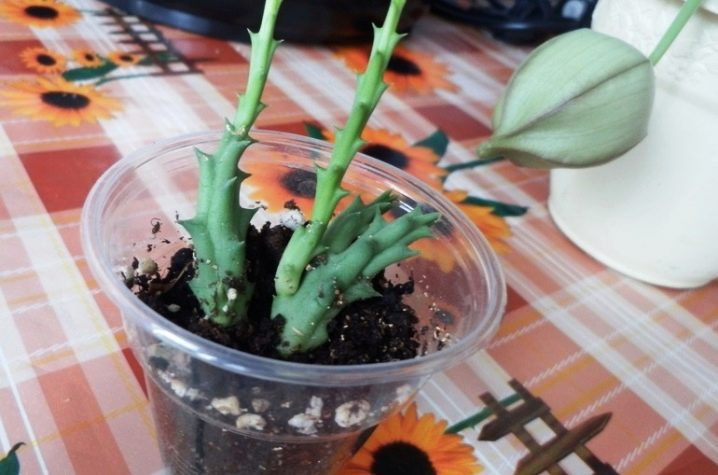
Diseases and pests
Most often, mistakes in the process of caring for a crop lead to the fact that a succulent develops an ailment such as root rot... This option can happen with regular stagnation of liquid in a flower pot.
Often the cactus is affected chlorosis, the signs of which are yellowness on the shoots, the root system of the perennial also suffers from this disease. A preventive measure that reduces the risk of such an ailment will be to create an optimal level of lighting in the room. Besides, it is important to select a soil for growing succulents with an acidity of no more than 5 pH. Low-quality tap water with high acidity can provoke the development of the disease. To reduce this indicator, it is recommended to moisten the soil in a cactus pot with a solution based on citric acid.
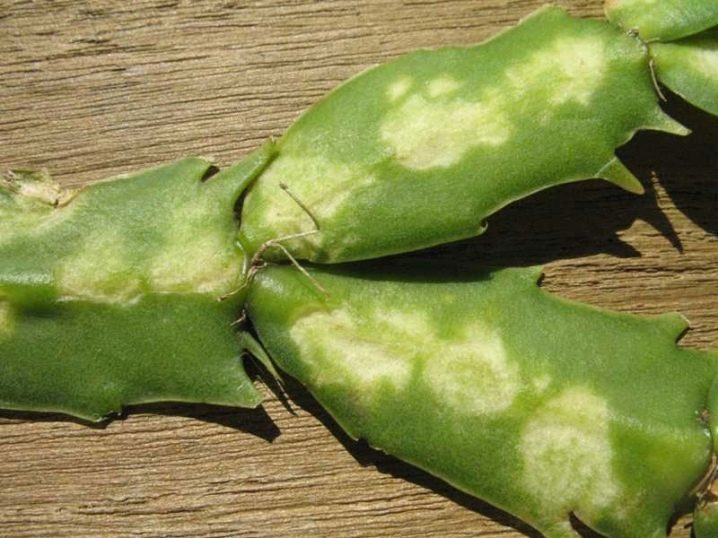
Another option, which has an effective preventive nature, which makes it possible to exclude situations with the appearance of insects on a flower, will be feeding a cactus with iron in a chelated form... In this case it is necessary to introduce fertilizers not into the soil, but to treat the shoots of the crop with the preparation.
In addition to diseases, Ripsalis is sometimes attacked by insect pests. As a rule, it is red ticks and scale insects... Treatment of the culture with soapy water will be a prophylactic means of combating them.
The manual method will also be an effective option for getting rid of pests. It involves the use of a cotton swab dipped in alcohol, which gently removes insects from the shoots of the plant.

As a radical measure, you will need to resort to using insecticidal formulations such as, "Karbofos" or "Aktara"... With a large number of individuals, multiple treatment of plants with these preparations will be required.

Flower mites can appear from low levels of indoor humidity. To quickly get rid of pests, you will need to increase the humidity around the plant. - a household humidifier can help in this matter, as well as a shower and regular spraying. Store-based control products may be needed only when a large number of ticks appear - in this case, the florist is recommended to use "Aktellik", "Kleschevit" or other drugs of similar action and composition.
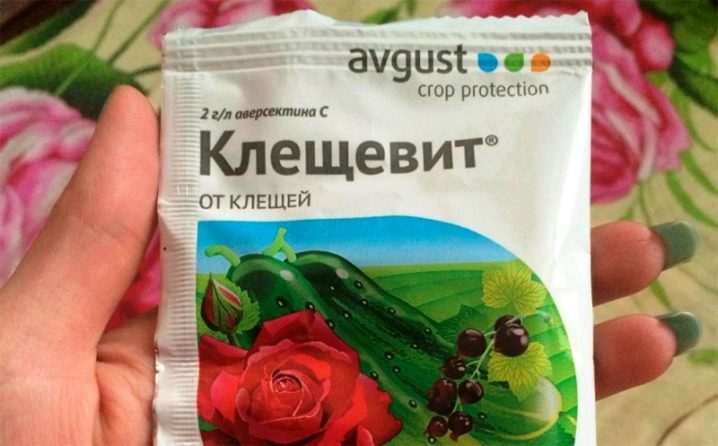
All about ripsalis, see the next video.























































The comment was sent successfully.